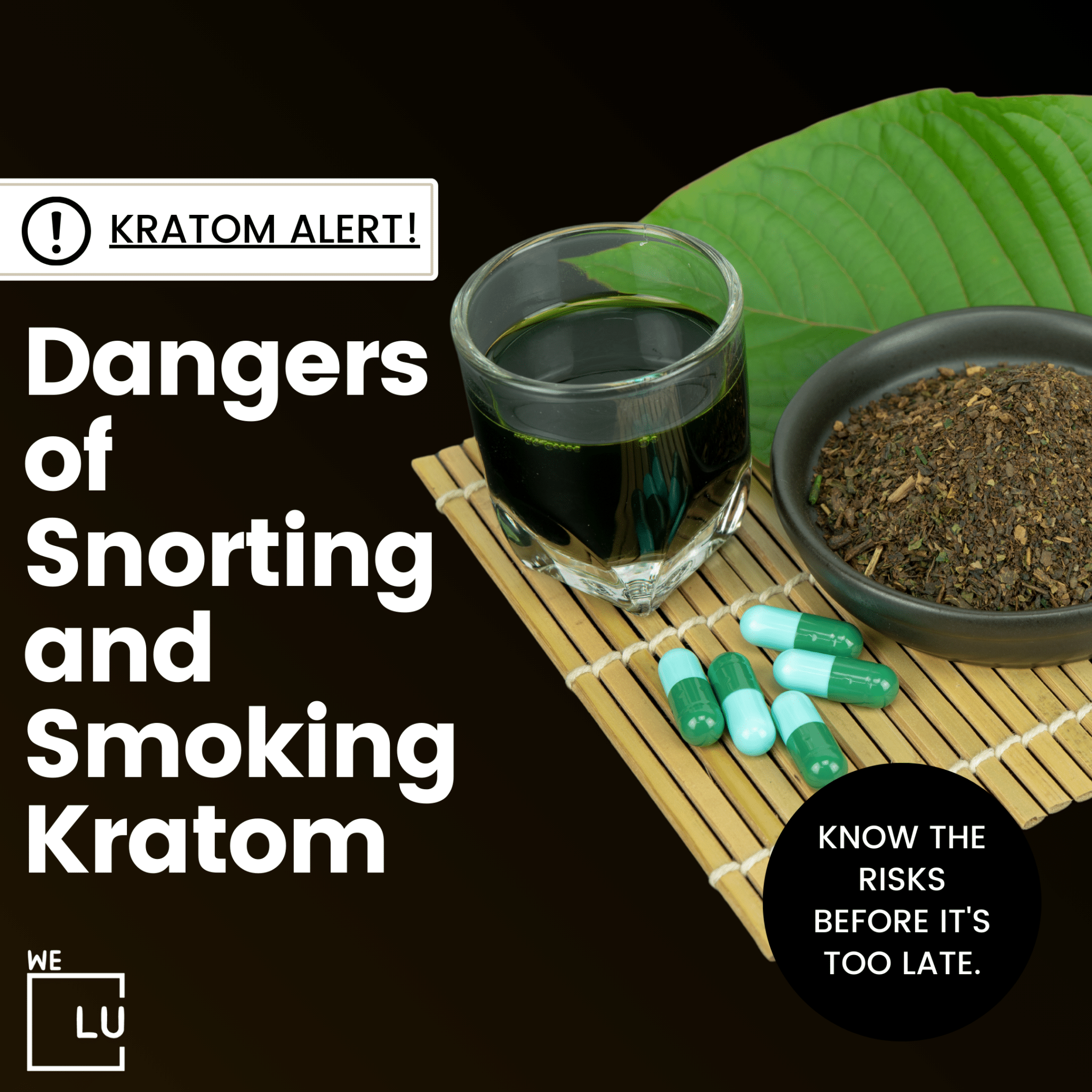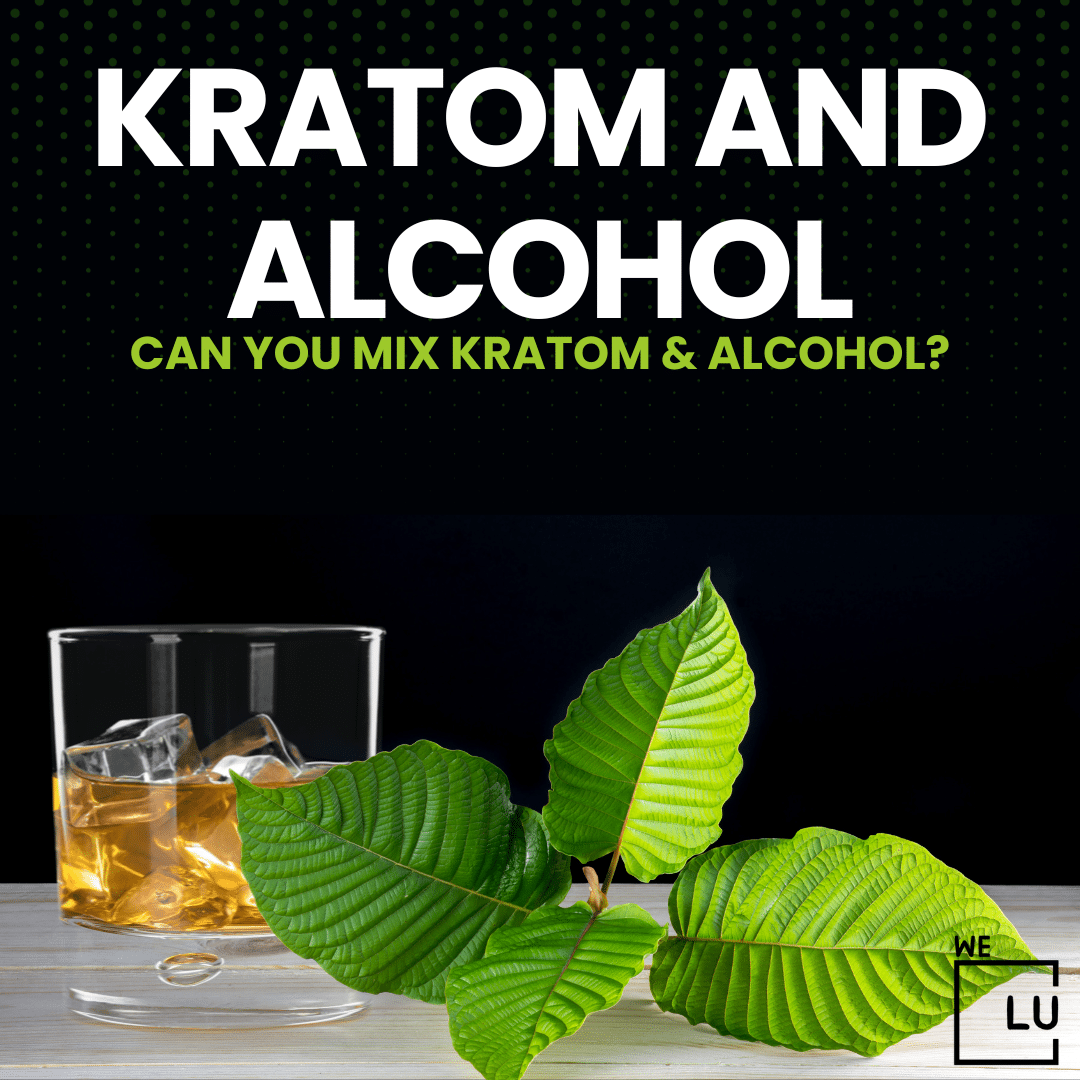What Is National Fentanyl Awareness Day?
National Fentanyl Awareness Day serves as a platform to inform the public about the hazards associated with fentanyl. This synthetic opioid surpasses morphine’s potency by 50 to 100 times, leading to potentially fatal overdoses and poisonings.
Frequently mixed with other substances like heroin, cocaine, and methamphetamine, fentanyl poses an elevated risk of death, mainly when users are unaware of its presence. According to the Centers for Disease Control and Prevention (CDC), fentanyl played a role in 67% of the 107,375 drug overdose deaths in the United States during the 12 months ending in January 2021.
When Is Fentanyl Awareness Day?
This awareness initiative is marked by two distinct dates: May 7th and August 21st.
The DEA designated May 7th in the year 2021 to bolster nationwide endeavors in informing the public about the fentanyl threat and strategies for preventing fentanyl-related fatalities. On the other hand, August 21st was established by Facing Fentanyl, a grassroots organization comprising families and advocates who have lost loved ones to fentanyl poisoning.
These dates serve to commemorate those lost and call for concerted efforts to end the fentanyl crisis. Both dates share the common objectives of dispelling misconceptions about fentanyl, providing resources and support for those impacted, and advocating for policy changes to curb both the supply and demand for fentanyl.
Why Is Fentanyl Awareness Important?
National Fentanyl Awareness Day presents a crucial opportunity to disseminate essential information and potentially save lives from the perils of this lethal drug. Individuals can contribute to the cause by sharing information on social media using hashtags such as #JustKNOW, #FacingFentanylNow, #FentanylAwarenessDay, or #FAD2023.
Additionally, interested parties can visit the DEA or Facing Fentanyl websites to explore ways to get involved, access educational materials, find assistance and support, or become active partners in the collective effort to halt the escalating toll of fentanyl-related tragedies. Through collaborative efforts, there is an opportunity to make a positive impact and prevent further loss of lives to fentanyl.
What Is Fentanyl Awareness?
Fentanyl awareness refers to efforts aimed at educating the public about the dangers associated with fentanyl,. This awareness campaign typically focuses on disseminating information about the risks of fentanyl use, the potential for overdose, and strategies for prevention and harm reduction.
Key points covered in fentanyl awareness initiatives may include:
- Potency: Emphasizing that fentanyl is much stronger than other opioids, even in small amounts, which increases the risk of overdose.
- Mixing: Highlighting the common practice of illicitly mixing fentanyl with other drugs, such as heroin, cocaine, or methamphetamine, without the user’s knowledge, leading to increased dangers.
- Overdose Risk: Communicating the heightened risk of fatal overdoses associated with fentanyl use, especially when users are unaware of its presence in a substance they are using.
- Prevention Strategies: Providing information on harm reduction strategies, such as testing substances for the presence of fentanyl, promoting responsible prescription medication use, and raising awareness about the signs of overdose.
- Support and Resources: Offering resources for individuals and communities affected by fentanyl, including support services, treatment options, and information on how to seek help.
- Policy Advocacy: Encouraging advocacy for policies aimed at reducing the supply and demand for fentanyl, as well as supporting measures to address the broader opioid crisis.
Fentanyl awareness campaigns may be organized by government agencies, non-profit organizations, healthcare providers, and community groups. The goal is to empower individuals with knowledge, reduce stigma, and ultimately contribute to a safer environment by preventing fentanyl-related harm. Public awareness is crucial in combating the opioid epidemic and promoting informed decision-making among individuals who may come into contact with fentanyl.
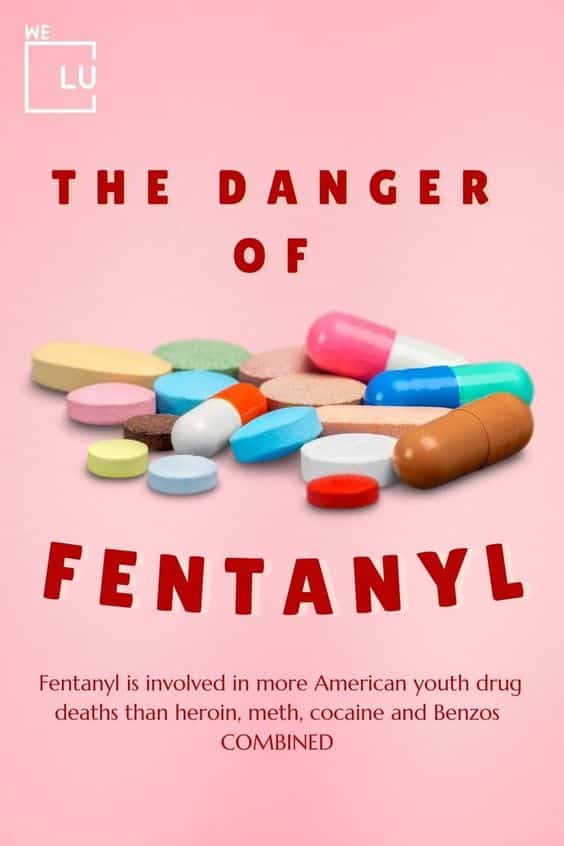
Skip To:
Learn More:
- Fentanyl Facts, Effects, Use, And How Does Fentanyl Make You Feel?
- What Is A Lethal Dose Of Fentanyl? Fentanyl Overdose Facts
- Why Is Fentanyl So Dangerous? What is Fentanyl, Effect & Use
- How Long Does Fentanyl Stay In Urine? Fentanyl Urine Testing and Half-life.
- How long does fentanyl stay in your system? Addiction, Drug Tests, Overdose & Treatment
- Fentanyl Drug Addiction Treatment, Effects & Overdose
- Fentanyl Withdrawal, Timeline, Symptoms, Dangers, Medical Detox & Addiction
- Fentanyl Overdose Symptoms, What Is Fentanyl? & Treatment

Get Your Life Back
Find Hope & Recovery. Get Safe Comfortable Detox, Addiction Rehab & Dual Diagnosis High-Quality Care.
Hotline (855) 695-1160Why Is Fentanyl So Dangerous?
Fentanyl is exceptionally dangerous due to its potency and the rapid onset of its effects. Here are several reasons why fentanyl is considered particularly hazardous:
- Potency: Fentanyl is much more potent than other opioids, including morphine and heroin. It is estimated to be 50 to 100 times more potent than morphine and about 50 times more potent than pharmaceutical-grade heroin. This potency increases the risk of overdose, as even a small amount of fentanyl can have a significant impact on the central nervous system.
- Rapid Onset: Fentanyl acts quickly in the body, leading to a rapid onset of its effects. This quick action increases the risk of respiratory depression, a potentially life-threatening condition where breathing becomes slow and shallow, ultimately resulting in insufficient oxygen reaching vital organs.
- Illicit Production: Fentanyl is often illicitly manufactured and sold on the black market. Illicitly produced fentanyl may be mixed with other drugs, and users may be unaware of its presence. This lack of awareness increases the likelihood of unintentional overdose.
- Mixing with Other Substances: Illicitly manufactured fentanyl is frequently mixed with other substances, such as heroin, cocaine, or methamphetamine, without the user’s knowledge. This practice, known as drug adulteration, heightens the risk of overdose, as users may underestimate the potency of the combined substances.
- Variability in Potency: The potency of illicitly produced fentanyl can vary widely, leading to unpredictability in the strength of the drug. This makes it challenging for users to gauge a safe dosage, further increasing the risk of overdose.
- Difficulty in Reversal: While opioid overdoses can often be reversed with the administration of naloxone (Narcan), fentanyl overdoses may require higher doses of naloxone or multiple administrations due to its potency. In some cases, individuals may succumb to overdose before receiving adequate medical intervention.
- Global Public Health Crisis: Fentanyl has played a significant role in the opioid epidemic, contributing to a surge in opioid-related overdoses and deaths. The widespread availability of fentanyl on the illicit market has intensified the public health crisis associated with opioid abuse.
Given these factors, raising awareness about the dangers of fentanyl, promoting harm reduction strategies, and implementing measures to address the illicit production and distribution of fentanyl are crucial components of efforts to mitigate its impact on public health.
Get Help. Get Better. Get Your Life Back.
Searching for an Accredited Drug and Alcohol Rehab Centers in Near You?
Even if you have failed previously and relapsed, or are in the middle of a difficult crisis, we stand ready to support you. Our trusted behavioral health specialists will not give up on you. When you feel ready or just want someone to speak to about therapy alternatives to change your life call us. Even if we cannot assist you, we will lead you to wherever you can get support. There is no obligation. Call our hotline today.
FREE Addiction Hotline – Call 24/7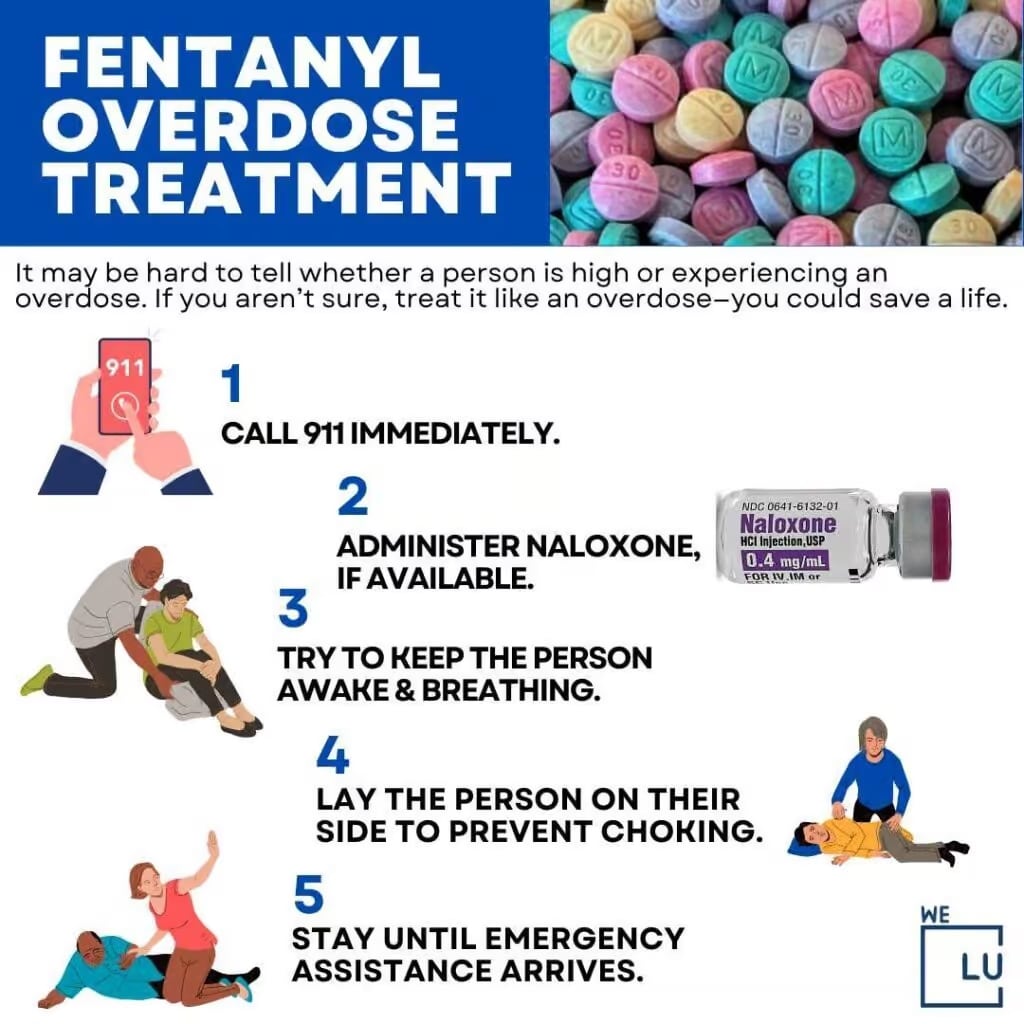
Fentanyl Overdose Awareness
Fentanyl overdose awareness involves educating individuals and communities about the risks and signs of a fentanyl overdose, as well as promoting strategies for prevention and response. Here are key aspects of fentanyl overdose awareness:
- Understanding Fentanyl:
- Potency: Emphasize the extreme potency of fentanyl compared to other opioids, making it crucial for individuals to be aware of the risks associated with its use.
- Illicit Production: Highlight the prevalence of illicitly manufactured fentanyl and the potential for it to be mixed with other drugs, increasing the risk of overdose.
- Signs of Overdose:
- Respiratory Depression: Educate on the symptoms of opioid overdose, particularly respiratory depression, which can manifest as slow or shallow breathing.
- Unresponsiveness: Stress the importance of recognizing when someone is unresponsive or difficult to awaken.
- Prevention Strategies:
- Harm Reduction: Promote harm reduction practices, such as not using drugs alone, testing substances for the presence of fentanyl, and using naloxone (Narcan) in case of overdose.
- Safe Use Practices: Encourage responsible drug use and provide information on safer consumption methods.
- Naloxone Training:
- Distribution: Advocate for the widespread distribution of naloxone, a medication that can reverse opioid overdoses. Train individuals, including friends and family members of those at risk, on administering naloxone.
- Community Engagement:
- Education Programs: Support community-based education programs that raise awareness about fentanyl, its dangers, and overdose prevention.
- Community Support Networks: Establish support networks and resources for individuals struggling with substance abuse issues.
- Emergency Response:
- Calling for Help: Emphasize the importance of calling emergency services immediately in case of a suspected overdose.
- Good Samaritan Laws: Inform individuals about Good Samaritan laws that protect those seeking help or reporting an overdose from legal repercussions.
- Policy Advocacy:
- Advocacy Efforts: Support and participate in advocacy efforts aimed at addressing the root causes of the opioid crisis, including illicit drug production, distribution, and addiction treatment.
- Media and Public Campaigns:
- Awareness Campaigns: Utilize various media channels to run public awareness campaigns, providing information on fentanyl overdose risks, prevention, and available resources.
Fentanyl overdose awareness is a crucial component of the broader efforts to combat the opioid epidemic. By educating individuals, communities, and healthcare professionals, it is possible to reduce the incidence of fentanyl-related overdoses and save lives through timely intervention and prevention measures.
Comfortable Facilities & Amenities
High-Quality Addiction & Mental Health Rehabilitation Treatment
Rehab Centers TourRenowned California Addiction Center. Serene Private Facilities. Inpatient rehab programs vary.
Addiction Helpline (855) 695-1160Proven recovery success experience, backed by a Team w/ History of:
15+
Years of Unified Experience
100s
5-Star Reviews Across Our Centers
10K
Recovery Success Stories Across Our Network
- Low Patient to Therapist Ratio
- Onsite Medical Detox Center
- Comprehensive Dual-Diagnosis Treatment
- Complimentary Family & Alumni Programs
- Coaching, Recovery & Personal Development Events
Effects Of Fentanyl
Fentanyl is a potent synthetic opioid that affects the central nervous system, producing a range of effects. While it is a prescription medication used for managing severe pain, illicitly produced fentanyl is associated with a high risk of abuse, addiction, and overdose. Here are the key effects of fentanyl:
- Pain Relief: Fentanyl is primarily used for its analgesic (pain-relieving) properties. It is often prescribed to manage pain in situations such as surgery, cancer treatment, or severe injury.
- Euphoria and Relaxation: Like other opioids, fentanyl can produce a sense of euphoria and relaxation. These effects contribute to its potential for abuse.
- Sedation: Fentanyl can cause drowsiness and sedation, leading to a state of calm and relaxation. This effect is desirable in a medical setting for managing pain but can be problematic when the drug is misused.
- Respiratory Depression: One of the most dangerous effects of fentanyl is respiratory depression, where breathing becomes slow and shallow. In cases of overdose, this can lead to a lack of oxygen reaching vital organs, potentially resulting in coma or death.
- Nausea and Vomiting: Fentanyl use can cause nausea and vomiting, which may be problematic for some individuals, especially those using it for pain management.
- Confusion and Dizziness: Fentanyl may cause confusion and dizziness, impairing cognitive function and coordination.
- Tolerance and Dependence: Prolonged use of fentanyl can lead to the development of tolerance, requiring higher doses to achieve the same effects. Additionally, dependence can occur, leading to withdrawal symptoms if the drug is suddenly stopped.
- Addiction: The potent euphoric effects of fentanyl increase the risk of addiction, characterized by compulsive drug-seeking behavior despite negative consequences.
- Overdose: Fentanyl overdoses can result in severe respiratory depression, unconsciousness, and death. Due to its potency, even small amounts can lead to overdose, especially when mixed with other substances.
- Constricted Pupils: Like other opioids, fentanyl use can cause pupils to constrict (pinpoint pupils).
The effects of fentanyl can vary based on factors such as the individual’s tolerance, the dose consumed, the method of administration, and whether the drug is used as prescribed or abused. Illicitly produced fentanyl, often sold on the black market, poses a significant risk due to its variability in potency and the potential for unintentional overdose. Education, prevention, and treatment efforts are essential in addressing the public health concerns associated with fentanyl use.
Short-term Effects of Fentanyl
These short-term effects highlight the immediate impact of fentanyl on the central nervous system and the potential for side effects even when used as prescribed.
- Pain Relief: Fentanyl provides rapid and potent pain relief, making it effective for managing severe pain in medical settings.
- Euphoria: Users may experience a sense of euphoria, contributing to its potential for misuse and addiction.
- Sedation: Fentanyl induces sedation and a state of calm, leading to drowsiness and relaxation.
- Confusion and Dizziness: Short-term use can result in confusion and dizziness, affecting cognitive function and coordination.
- Nausea and Vomiting: Some individuals may experience nausea and vomiting as side effects of fentanyl.
- Constricted Pupils: Fentanyl use can cause pupils to constrict, resulting in pinpoint pupils.
These short-term benefits come with significant risks. Fentanyl’s depressant effects on the central nervous system can lead to respiratory depression, sedation, and a heightened risk of overdose, particularly when taken in higher doses or combination with other substances.
Short-term use of fentanyl requires caution due to its potential for severe and immediate consequences, emphasizing the importance of medical supervision and responsible prescribing practices.
Long-term Effects of Fentanyl
- Tolerance: Prolonged use of fentanyl can lead to the development of tolerance, requiring higher doses to achieve the same analgesic effects.
- Physical Dependence: Long-term use may result in physical dependence, causing withdrawal symptoms when the drug is reduced or discontinued.
- Addiction: Fentanyl has a high potential for addiction, with long-term use increasing the risk of compulsive drug-seeking behavior despite negative consequences.
- Cognitive Impairment: Chronic use of opioids, including fentanyl, can have cognitive effects, impacting memory, attention, and decision-making.
- Respiratory Issues: Continued use of fentanyl can contribute to respiratory problems, including chronic respiratory depression, which is a risk factor for overdose.
- Gastrointestinal Issues: Long-term opioid use, including fentanyl, may lead to constipation and other gastrointestinal issues.
- Psychological Effects: Chronic opioid use can contribute to mood changes, anxiety, and depression.
- Social Consequences: Fentanyl addiction can result in social and occupational problems, strained relationships, and financial difficulties.
- Increased Risk of Overdose: The longer an individual uses fentanyl, the higher the risk of unintentional overdose due to factors such as increased tolerance and variability in drug potency.
- Medical Complications: Long-term use of fentanyl is associated with various medical complications, including cardiovascular issues and potential damage to organs.
The long-term effects of fentanyl can vary among individuals and depend on factors such as the dosage, duration of use, overall health, and whether the drug is used as prescribed or abused. Seeking medical guidance and support is essential for individuals dealing with chronic pain to manage their conditions effectively while minimizing the risk of adverse effects.
World-class, Accredited, 5-Star Reviewed, Effective Addiction & Mental Health Programs. Complete Behavioral Health Inpatient Rehab, Detox plus Co-occuring Disorders Therapy.
CALL (855) 695-1160End the Addiction Pain. End the Emotional Rollercoaster. Get Your Life Back. Start Drug, Alcohol & Dual Diagnosis Mental Health Treatment Now. Get Free No-obligation Guidance by Substance Abuse Specialists Who Understand Addiction & Mental Health Recovery & Know How to Help.
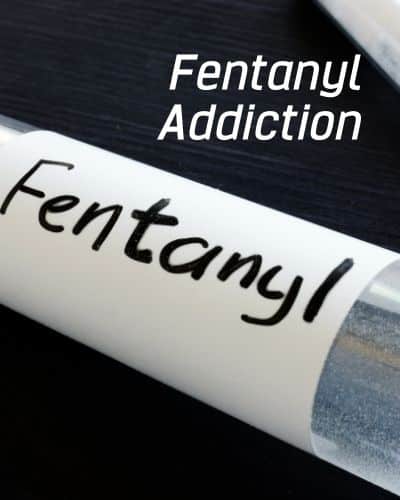
Fentanyl Addiction
Fentanyl addiction refers to a condition where an individual develops a compulsive and uncontrollable urge to seek, use, and continue using fentanyl despite knowing the associated risks and experiencing negative consequences. Fentanyl is a potent synthetic opioid, and its addictive potential is high. Here are key aspects of fentanyl addiction:
- Rapid Onset of Addiction: Due to its potency, fentanyl can lead to the rapid development of tolerance and dependence, making users more susceptible to addiction.
- Physical Dependence: With prolonged use, the body becomes physically dependent on fentanyl. This results in the manifestation of withdrawal symptoms when the drug is reduced or discontinued, reinforcing the cycle of use.
- Psychological Dependence: Fentanyl addiction is not only physical but also psychological. Individuals may feel a psychological compulsion to use the drug to cope with stress, anxiety, or emotional pain.
- Compulsive Drug-Seeking Behavior: Fentanyl addiction is characterized by an overwhelming urge to obtain and use the drug, often at the expense of personal relationships, work, and other responsibilities.
- Tolerance Development: Individuals may develop tolerance over time, requiring higher doses to achieve the desired effects. This escalation in dosage contributes to the risk of overdose.
- Withdrawal Symptoms: Abrupt cessation of fentanyl use leads to withdrawal symptoms, which can be physically and mentally distressing. Symptoms may include nausea, vomiting, muscle pain, anxiety, and insomnia.
- Risk of Overdose: The potent nature of fentanyl increases the risk of overdose, especially when users miscalculate dosages or encounter illicitly manufactured forms with varying potency.
- Social and Occupational Consequences: Fentanyl addiction often results in social isolation, strained relationships, and difficulties at work or in school. The compulsive nature of the addiction can lead to neglect of personal and professional responsibilities.
- Health Consequences: Fentanyl abuse can have severe health consequences, including respiratory issues, cardiovascular problems, and an increased risk of infectious diseases if the drug is administered through non-sterile means (e.g., injection).
- Treatment Challenges: Overcoming fentanyl addiction can be challenging, requiring comprehensive treatment approaches, including medical detoxification, behavioral therapy, counseling, and support groups.
Due to the severe health risks associated with fentanyl abuse and addiction, seeking professional help is crucial. Treatment programs are available to help individuals overcome fentanyl addiction, address underlying issues, and work toward long-term recovery. If you or someone you know is struggling with fentanyl addiction, reach out to healthcare professionals or addiction treatment centers for assistance.
Experience Transformative Recovery at the We Level Up California Treatment Center.
See our authentic success stories. Get inspired. Get the help you deserve.



Start a New Life
Begin with a free call to an addiction & behavioral health treatment advisor. Learn more about our dual-diagnosis programs. The We Level Up treatment center network delivers recovery programs that vary by each treatment facility. Call to learn more.
- Personalized Care
- Caring Accountable Staff
- World-class Amenities
- Licensed & Accredited
- Renowned w/ 100s 5-Star Reviews
We’ll Call You
“This Was Not How I Wanted To Live,” Ryan’s Recovery From Fentanyl, Heroin, & Oxycontin Addiction
Search National Fentanyl Awareness Day, Drug & Alcohol Rehab / Detox & Mental Health Topics & Resources
Sources
- Fentanyl Awareness Day – https://www.fentanylawarenessday.org/ Related: National Fentanyl Awareness Day, Fentanyl Overdose Awareness
- DEA – DEA Recognizes National Fentanyl Prevention and Awareness Day with Extended Hours for the Faces of Fentanyl Exhibit – https://www.dea.gov/press-releases/2023/08/17/dea-recognizes-national-fentanyl-prevention-and-awareness-day-extended Related: National Fentanyl Awareness Day, Fentanyl Overdose Awareness
- National Institute on Drug Abuse. (2016). Fentanyl.
- Fentanyl DrugFacts – National Institute on Drug Abuse
- Drug Enforcement Administration. (2017). Drugs of Abuse.
- Fentanyl – U.S. Drug Enforcement Administration (DEA) (dea.gov)
- U.S. Drug Enforcement Administration. (2017). Drugs of Abuse: A DEA Resource Guide.
- Department of Health and Human Services (HHS) – Opioid Crisis: https://www.hhs.gov/opioids/
- NIDA. “Fentanyl DrugFacts.” National Institute on Drug Abuse, 1 Jun. 2021, https://nida.nih.gov/publications/drugfacts/fentanyl Related: National Fentanyl Awareness Day, Fentanyl Overdose Awareness
- Substance Abuse and Mental Health Services Administration. (2019). Key Substance Use and Mental Health Indicators in the United States: Results from the 2018 National Survey on Drug Use and Health. Related: National Fentanyl Awareness Day, Fentanyl Overdose Awareness



